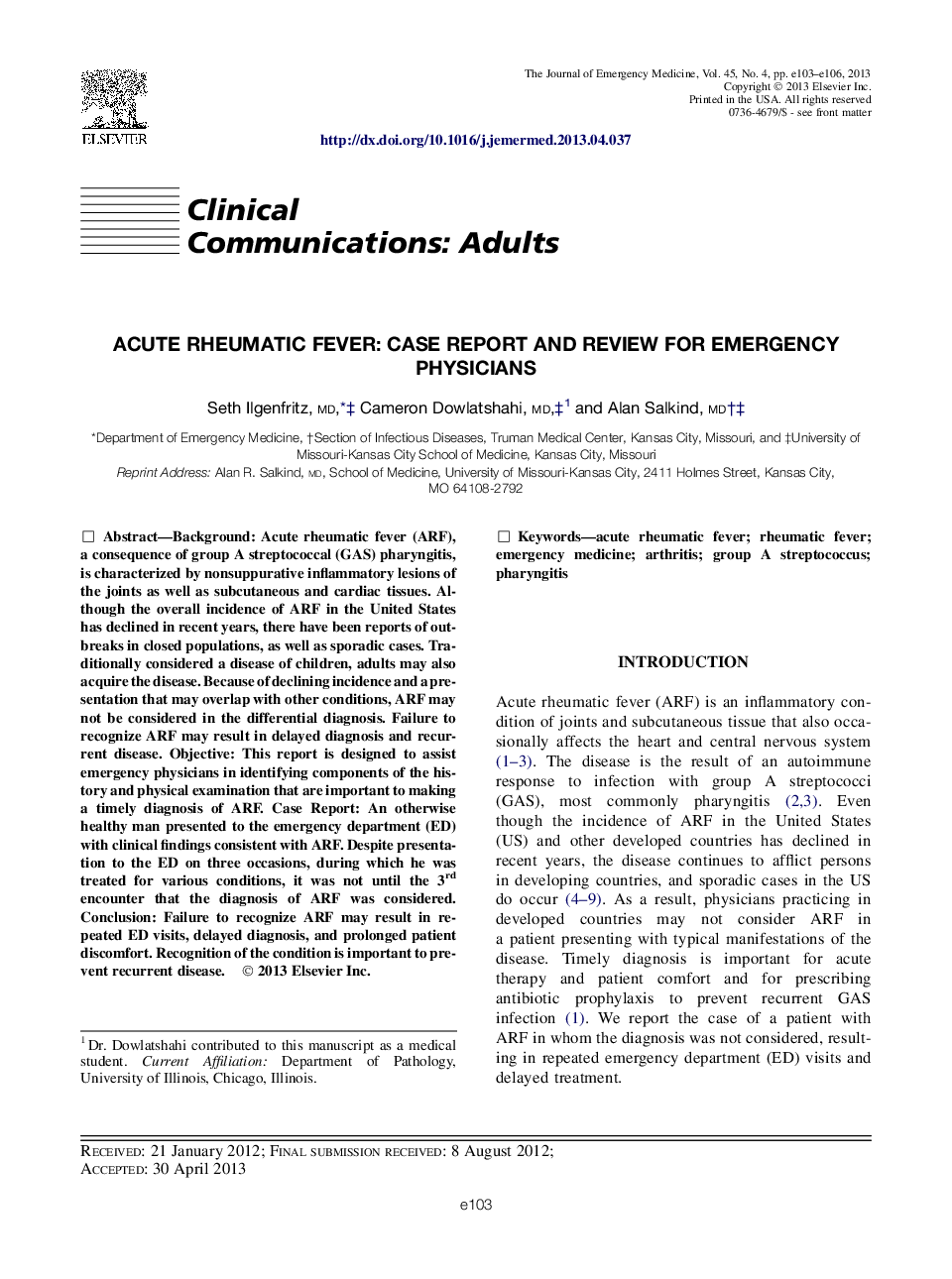| Article ID | Journal | Published Year | Pages | File Type |
|---|---|---|---|---|
| 3247827 | The Journal of Emergency Medicine | 2013 | 4 Pages |
BackgroundAcute rheumatic fever (ARF), a consequence of group A streptococcal (GAS) pharyngitis, is characterized by nonsuppurative inflammatory lesions of the joints as well as subcutaneous and cardiac tissues. Although the overall incidence of ARF in the United States has declined in recent years, there have been reports of outbreaks in closed populations, as well as sporadic cases. Traditionally considered a disease of children, adults may also acquire the disease. Because of declining incidence and a presentation that may overlap with other conditions, ARF may not be considered in the differential diagnosis. Failure to recognize ARF may result in delayed diagnosis and recurrent disease.ObjectiveThis report is designed to assist emergency physicians in identifying components of the history and physical examination that are important to making a timely diagnosis of ARF.Case ReportAn otherwise healthy man presented to the emergency department (ED) with clinical findings consistent with ARF. Despite presentation to the ED on three occasions, during which he was treated for various conditions, it was not until the 3rd encounter that the diagnosis of ARF was considered.ConclusionFailure to recognize ARF may result in repeated ED visits, delayed diagnosis, and prolonged patient discomfort. Recognition of the condition is important to prevent recurrent disease.
